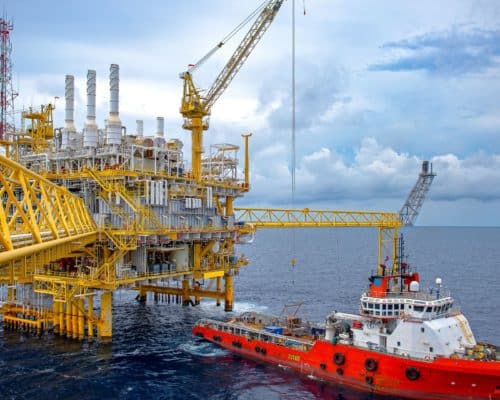Bangladesh Struggling with Pricey LNG
Sk Hasan Ali / Shutterstock.com
17 January 2023 – by Tim Daiss
Bangladesh, similar to nearby Pakistan, is facing severe headwinds from its decision to make liquefied natural gas (LNG) a major part of its power generation energy mix.
The South Asian nation relies on the super-cooled fuel for around 20% of its gas needs, up from some 11% only four years ago. Bangladesh started importing LNG from 2018-19 to compensate for depleted domestic gas reserves. It started purchasing LNG for gas-fired power plants from the spot market in 2020 to meet growing demand.
Bangladesh’s energy supply quandary has become even more acute since Russia’s invasion of Ukraine last year. The war kicked off an ongoing global energy crisis, resulting in record-high prices for pipeline natural gas supply and LNG.
Bangladesh Will Increase Liquefied Natural Gas Imports
This, however, hasn’t stopped the country of more than 168 million people from pushing ahead with more LNG import infrastructure development plans. Bangladesh has proposed 15.1 million tonnes per annum (mtpa) of new LNG import capacity. This comes with a price tag of USD 2.6 billion. Currently, the country has 9.3 mtpa of LNG import projects still operational.
Bangladesh’s reliance on imported LNG has already caused major blackouts over most of the country due to exorbitantly high fuel prices, including spot procurement and long-term offtake deals. The blackouts are expected to continue until 2026.
As such, Bangladesh has been forced to seek financial help from creditors and the International Monetary Fund (IMF) since it cannot secure enough LNG spot purchases at affordable prices. It also can’t afford to pay higher prices for long-term oil-indexed LNG deals.
Furthermore, legacy exporter Qatar (one of Bangladesh’s main LNG suppliers) has indicated that it will only sell more contracted volumes from 2025, once its North Field East Project becomes operational. Consequently, rolling power cuts are likely to put a drag on Bangladesh’s economic growth in the next few years.
Cost-prohibitive LNG
Due to these dynamics, the case for more LNG infrastructure development and procurement makes little sense for Bangladesh.
Moreover, from October 2021 to mid-2022, Bangladeshi energy companies were forced to purchase LNG at between USD 30-37 per million British thermal units (MMBtu).
At these prices, a single shipment can cost USD 110-135 million. This is five times higher than in May 2021 and 10 times the cost of May 2020.
Bangladesh’s long-term contracts have exacerbated this problem even though, in theory, they should protect it from price spikes.
However, oil-indexed long-term offtake contracts have offered little pricing protection. Oil remains at seven-year highs, with forecasts for high oil prices in 2023 and 2024 well above the five-year average of USD 60 per barrel.
Coal Is Also the Wrong Choice
Coal, for its part, is also problematic since it’s the dirtiest burning fossil fuel. Yet, Bangladesh has also made a coal pivot to offset its gas supply problems. The country is boosting coal’s share in its energy mix to the highest on record.
This means that Bangladesh could see over a quarter of its power generation capacity based on coal. This is also questionable, as coal – when used for power generation – emits more CO2 than natural gas. The cost of coal also increased in Bangladesh over the past year by a massive 78%.
Renewable Energy Offer the Best Alternative
Renewable energy in Bangladesh provides a cleaner, cheaper and more reliable alternative. However, renewables make up only a marginal part of the country’s energy mix, coming in at only 4%. This is low compared to the government’s, so far, failed target of generating 10% of electricity from renewables by 2021.
Going forward, the country must add renewables infrastructure and solve implementation problems. The country must update its electricity grid to allow more power derived from renewable sources.
Bangladesh must also remove fossil fuel subsidies that have, so far, disincentivised investment in renewables. This, along with implementing favourable national and regional policies, would also help the country’s renewables sector scale up.
Meanwhile, energy economics already favour renewables development over LNG imports and gas-to-power build-out.
Of the renewables (mostly wind and solar power) that came on stream in 2020, nearly two-thirds, some 62%, were less expensive than the cheapest new fossil fuels. That cost competitiveness should continue to gain momentum as fossil fuel prices remain high and renewables technology and economies of scale continue to develop.
by Tim Daiss
Tim has been working in energy markets in the Asia-Pacific region for more than ten years. He was trained as an LNG and oil markets analyst and writer then switched to working in sustainable energy, including solar and wind power project financing and due diligence. He’s performed regulatory, geopolitical and market due diligence for energy projects in Vietnam, Thailand and Indonesia. He’s also worked as a consultant/advisor for US, UK and Singapore-based energy consultancies including Wood Mackenzie, Enerdata, S&P Global, KBR, Critical Resource, and others. He is the Chief Marketing Officer (CMO) for US-based lithium-sulfur EV battery start-up Bemp Research Corp.
Read more



